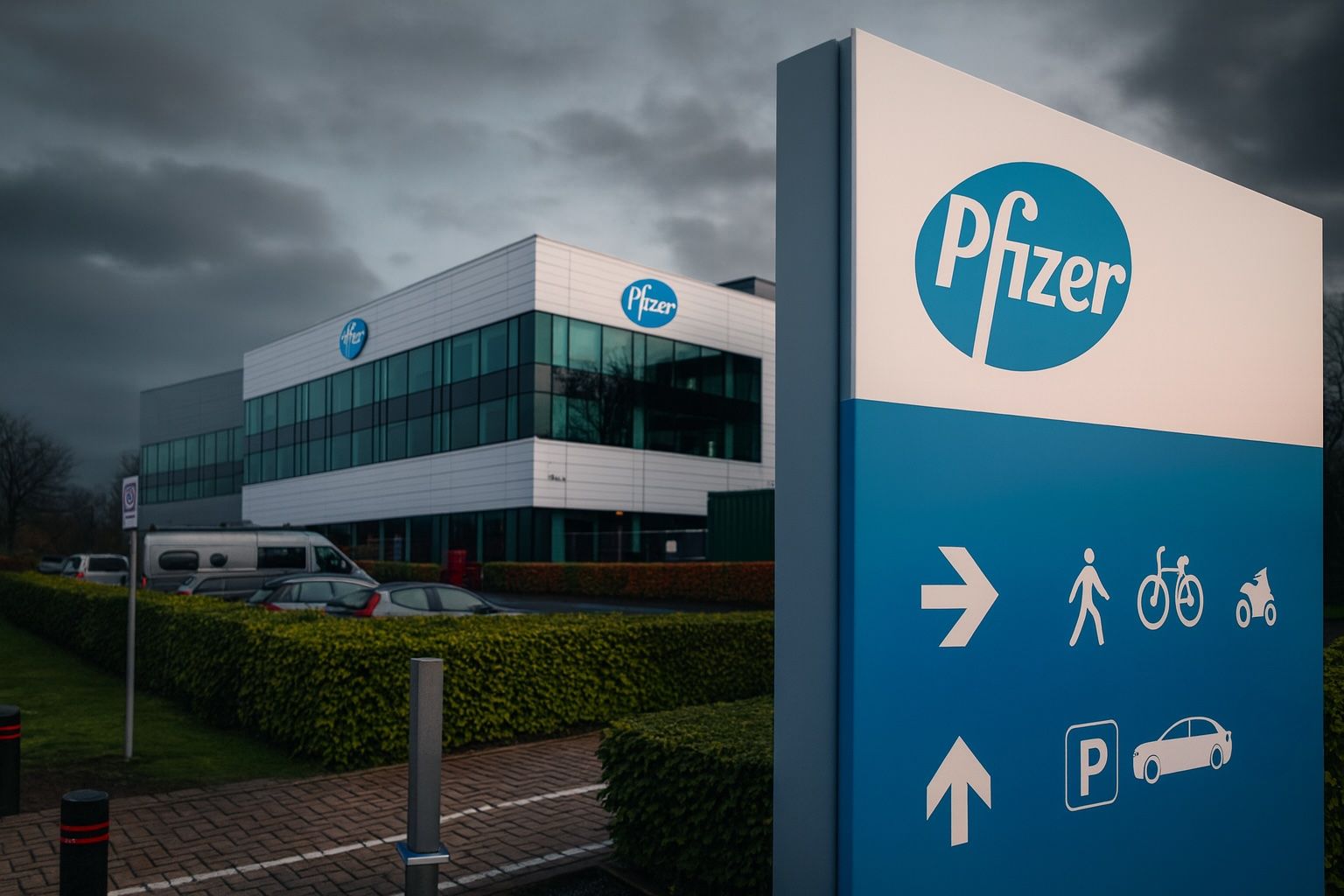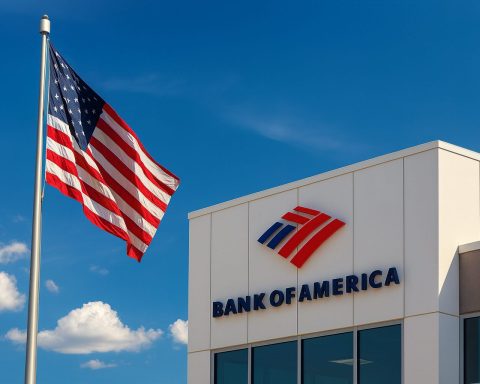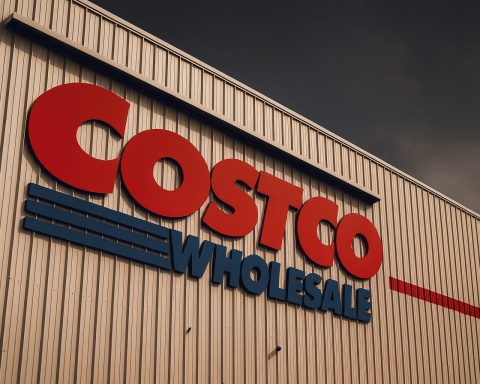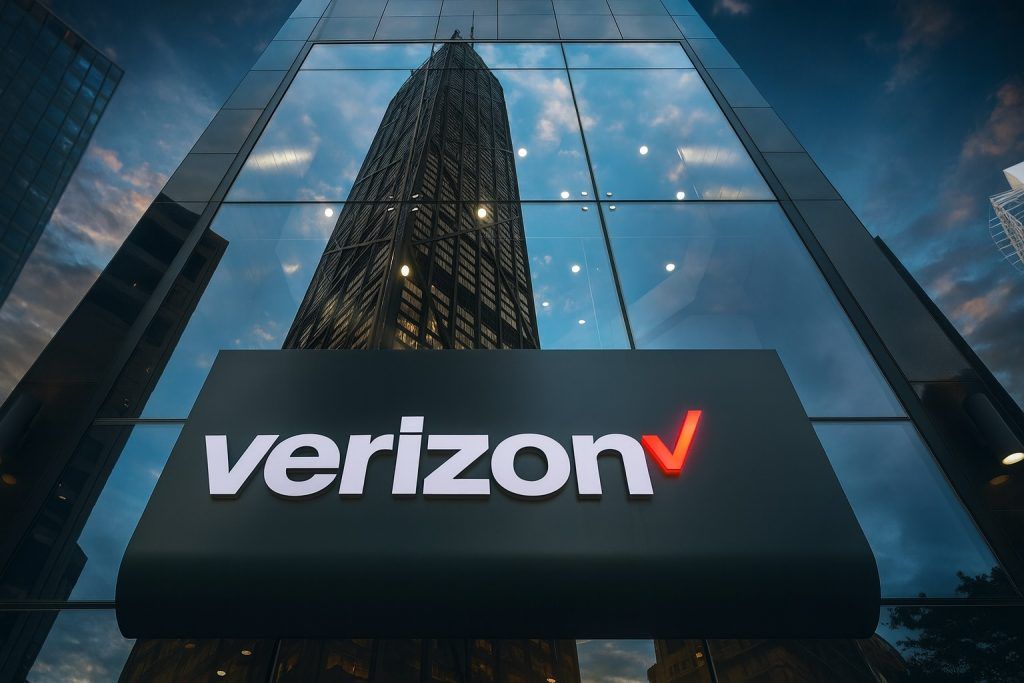Pfizer’s share price is back in the spotlight on Friday, November 21, 2025, as investors digest strong Phase 3 flu-vaccine data, a $6 billion bond sale to fund its obesity-drug deal, and ongoing debate around the company’s roughly 7% dividend yield.
Pfizer stock price on November 21, 2025
Pfizer (NYSE: PFE) staged a solid rebound in Friday’s regular session:
- Regular session: PFE closed around $25.18, up just over 3% on the day, after trading between roughly $24.6 and $25.2. [1]
- After-hours: By 8:00 p.m. EST, the stock had slipped back to about $24.36, down roughly 3.25% from the close, in relatively light extended-hours trading. [2]
For context, Pfizer’s shares are still down about 8% year-to-date, even as the broader large-cap pharma peer group has gained more than 15%, according to new Zacks analysis. [3]
That combination — a beaten-down share price, a high yield and fresh pipeline news — is exactly what’s drawing traders back to the name today.
1. New mRNA flu vaccine data boosts sentiment
One of the clearest intraday catalysts for PFE on November 21 was positive Phase 3 data for Pfizer’s next‑generation mRNA flu shot.
A Phase 3 study funded by Pfizer tested a quadrivalent nucleoside‑modified mRNA influenza vaccine in about 18,500 adults aged 18–64, comparing it head‑to‑head against a standard inactivated quadrivalent flu vaccine. [4]
Key takeaways from the Benzinga summary of the trial:
- The experimental mRNA flu shot showed stronger protection against circulating strains, particularly the dominant A/H3N2 and A/H1N1 viruses that drove most cases in the trial season. [5]
- The candidate achieved a relative efficacy of roughly 34.5% compared with the licensed comparator vaccine, meeting criteria for both non‑inferiority and superiority in the primary endpoint. [6]
- Immune responses to influenza A strains were robust; responses for B strains were more modest, consistent with their low circulation during the study. [7]
- The trade‑off: the mRNA shot produced more short‑term local and systemic reactions (such as injection‑site soreness, fatigue or fever) than the traditional vaccine, though most were mild to moderate. [8]
For investors, the significance is twofold:
- Validation of Pfizer’s mRNA platform beyond COVID‑19. Success in flu gives Pfizer a potential long-term franchise in a huge, recurring seasonal market, and supports its broader mRNA pipeline narrative.
- Evidence of post‑COVID innovation. The company is under pressure to prove it can replace fading Comirnaty and Paxlovid revenue with new products; today’s flu-vaccine data is one of the more tangible signs on that front.
Benzinga noted that Pfizer stock was up just over 3% to about $25.18 around the time the data hit the tape, underscoring how closely traders are linking pipeline progress to the share price. [9]
2. $6 billion bond sale funds the $10 billion Metsera obesity push
The other big development investors are parsing today is Pfizer’s $6 billion bond issuance, which formally prices and settles around November 21, 2025.
A German market update via ad‑hoc‑news/boerse‑global reports that Pfizer raised $6 billion in the U.S. bond market on favorable terms to fund the cash portion of its nearly $10 billion acquisition of Metsera, a developer of next‑generation weight‑loss medicines. [10]
What the Metsera deal looks like
Earlier this month, Metsera accepted a sweetened offer from Pfizer after a fierce bidding war with Novo Nordisk. According to Reuters, the final deal is worth up to $10 billion, structured as: [11]
- $65.60 per Metsera share in cash upfront, plus
- Up to $20.65 per share in contingent value rights (CVRs) tied to the success of Metsera’s pipeline.
Metsera’s key assets include:
- MET‑097i, a GLP‑1 obesity treatment designed as a once‑monthly injection, an important convenience play versus weekly injections from current market leaders. [12]
- MET‑233i, an amylin analog that could be combined with GLP‑1 therapies to deepen weight‑loss effects. [13]
By clinching Metsera, Pfizer moves from the sidelines into the core of the obesity‑drug arms race, trying to catch up with Novo Nordisk and Eli Lilly, whose GLP‑1 franchises have been driving a large portion of global pharma growth.
How the bond deal is structured
An SEC 424B5 prospectus supplement details Pfizer’s new multi‑tranche U.S. dollar bond offering: [14]
- A floating‑rate note tied to compounded SOFR + 0.50%, maturing 2027.
- Fixed‑rate notes with coupons between 3.875% and 5.700% maturing from 2027 all the way to 2065.
- Aggregate principal across all tranches totals about $6 billion, with individual tranches including a $1.25 billion 2035 note at 4.875% and a $500 million 2065 note at 5.7%, among others. [15]
Ad‑hoc‑news highlights that the financing was well received by investors, allowing Pfizer to secure “highly competitive borrowing costs” and signaling continued confidence in its credit profile despite higher global interest rates. [16]
Legal clean-up: Texas settlement
At the same time, Pfizer has moved to clear a legal overhang: together with partner Tris Pharma, it agreed to pay $41.5 million to the state of Texas over issues tied to Quillivant XR, an ADHD medication used in Medicaid‑insured children. Pfizer denies wrongdoing, but the settlement removes a lingering potential headline risk just as the company pivots into obesity and other growth areas. [17]
3. Zacks: non‑COVID comeback vs looming LOE cliff
A widely circulated Zacks research note, republished via Nasdaq and Yahoo Finance, is another major piece of Pfizer news dated November 21. [18]
The report draws a stark contrast between:
- Declining COVID revenues from Comirnaty and Paxlovid, and
- Improving non‑COVID “operational revenue” from established and newly acquired drugs.
According to Zacks’ breakdown:
- Key in‑line products such as Vyndaqel, Padcev and Eliquis, along with newer launches and Seagen‑acquired oncology assets (Adcetris, Padcev, Tukysa, Tivdak), have been driving growth in 2024–2025. [19]
- Pfizer received nine new medicine and vaccine approvals in 2023, with additional pipeline progress in 2024, including approval of Hympavzi (marstacimab) for hemophilia. [20]
- Recently launched and acquired products grew about 9% operationally in the first nine months of 2025, and momentum is expected to continue into 2026. [21]
On the flip side, the report warns about:
- Medicare Part D headwinds in the U.S.
- A significant loss‑of‑exclusivity (LOE) “cliff” between 2026 and 2030, as several big products face generic and biosimilar competition. [22]
Even so, Pfizer expects revenue to grow at about a 6% compound annual rate from 2025 to 2030, helped by its oncology, rare disease, vaccine and weight‑loss portfolios. [23]
From a valuation standpoint, Zacks notes that Pfizer trades at roughly 7.8 times forward earnings, well below the sector’s approximate 16.9x and also under its own five‑year average multiple, leading the firm to assign a Zacks Rank #3 (Hold) rating. [24]
4. Big institutions quietly add to Pfizer on November 21
While retail investors focus on daily price swings, several large institutions disclosed bigger positions in PFE in filings highlighted today.
Legal & General Group Plc
- Legal & General Group Plc increased its Pfizer stake by about 3.7% in Q2, bringing holdings to 38.4 million shares, or roughly 0.68% of the company, valued at about $932 million at the time of filing. [25]
Swiss National Bank
- The Swiss National Bank also lifted its holdings by approximately 7.4%, buying an extra 1.185 million shares, for a total of 17.17 million shares valued around $416 million and representing about 0.30% ownership. [26]
Willis Investment Counsel and others
- Willis Investment Counsel boosted its position by nearly 13%, to 1.72 million shares, making Pfizer its ninth‑largest holding at roughly 2.4% of the portfolio. [27]
- MarketBeat’s aggregation shows institutional investors and hedge funds now owning about 68% of Pfizer’s float, underscoring the stock’s status as a core large‑cap pharma holding even after its post‑COVID slump. [28]
These filings don’t guarantee future performance, but they do signal that long‑term capital is still willing to add on weakness, especially with the Metsera and mRNA flu narratives taking shape.
5. The 7% dividend: attractive income or potential stress point?
Pfizer’s quarterly dividend stands at $0.43 per share, or $1.72 annually, which translates into a yield of roughly 7% at today’s share price — one of the richest payouts among large‑cap healthcare stocks. [29]
MarketBeat notes that this equates to a dividend payout ratio near 100% of recent earnings, amplifying investor focus on whether the current distribution is sustainable as COVID revenues decline and debt rises due to the Metsera deal. [30]
Recent commentary from outlets like The Motley Fool has underlined the tension: while a near‑7% yield is tempting, it hasn’t yet been enough to reignite broad enthusiasm for the stock, with some analysts flagging the risk that the payout could eventually be trimmed if earnings or free cash flow disappoint. [31]
On the other hand:
- Pfizer has an extremely long dividend history, with hundreds of consecutive quarterly payments. [32]
- Management’s FY 2025 guidance of $3.00–$3.15 in EPS, reaffirmed with Q3 results, leaves some room to cover the dividend, service new debt, and still invest in R&D — if execution stays on track. [33]
For now, Wall Street’s overall stance remains cautious but not overly bearish: MarketBeat data show an average rating of “Hold” and a consensus price target around $28.28, modestly above today’s level. [34]
6. How all of this fits together for Pfizer stock
Putting today’s headlines in context, several themes emerge for PFE on November 21, 2025:
- Pipeline credibility is improving.
- The mRNA flu data help show Pfizer isn’t a one‑shot mRNA story tied only to COVID.
- Metsera adds a high‑risk, high‑reward obesity platform in a therapeutic area that has been driving enormous value for first movers. [35]
- Balance sheet flexibility remains, but leverage is rising.
- A $6 billion bond issue across multiple maturities is significant but manageable for a company of Pfizer’s size, especially with investment‑grade demand still strong. [36]
- Investors will be watching credit metrics and interest costs closely as the Metsera pipeline advances (or fails).
- Valuation vs. risk is the core debate.
- On one hand, PFE trades at a discount to the sector on earnings multiples, with a high dividend yield and heavy institutional ownership. [37]
- On the other, the company faces a cluster of patent expiries, policy pressures on pricing, integration risk from Metsera, and the possibility of dividend strain if earnings underperform.
- Short-term trading vs. long-term transformation.
- Today’s 3% regular‑session gain shows how sensitive PFE is to incremental good news, particularly around vaccines and obesity. [38]
- However, the after‑hours pullback to the mid‑$24s underscores continued caution — traders are quick to fade rallies until they see more consistent growth and clearer post‑COVID earnings power. [39]
Bottom line
On November 21, 2025, Pfizer stock is caught at the intersection of pipeline optimism and structural skepticism:
- The company is re‑arming its growth story with an ambitious obesity‑drug acquisition and promising mRNA flu data.
- It is leaning on the bond market to finance that strategy and leaning on its dividend to keep income investors engaged.
- Meanwhile, big institutional buyers are quietly adding shares, even as analysts broadly sit on a Hold rating and highlight a demanding to‑do list that includes offsetting patent losses and executing on multiple complex clinical programs. [40]
For investors tracking Pfizer, today’s news flow doesn’t fully resolve the bull‑vs‑bear debate — but it does mark a meaningful step in the company’s attempt to pivot from COVID hero to diversified growth story.
Disclaimer: This article is for informational purposes only and does not constitute investment, legal, or tax advice. Always do your own research or consult a licensed financial adviser before making investment decisions.
References
1. www.benzinga.com, 2. public.com, 3. www.nasdaq.com, 4. www.benzinga.com, 5. www.benzinga.com, 6. www.benzinga.com, 7. www.benzinga.com, 8. www.benzinga.com, 9. www.benzinga.com, 10. www.ad-hoc-news.de, 11. www.reuters.com, 12. www.reuters.com, 13. www.reuters.com, 14. www.stocktitan.net, 15. www.stocktitan.net, 16. www.ad-hoc-news.de, 17. www.ad-hoc-news.de, 18. www.nasdaq.com, 19. www.nasdaq.com, 20. www.nasdaq.com, 21. www.nasdaq.com, 22. www.nasdaq.com, 23. www.nasdaq.com, 24. www.nasdaq.com, 25. www.marketbeat.com, 26. www.marketbeat.com, 27. www.marketbeat.com, 28. www.marketbeat.com, 29. www.marketbeat.com, 30. www.marketbeat.com, 31. www.fool.com, 32. www.stocktitan.net, 33. www.marketbeat.com, 34. www.marketbeat.com, 35. www.benzinga.com, 36. www.ad-hoc-news.de, 37. www.nasdaq.com, 38. www.benzinga.com, 39. public.com, 40. www.marketbeat.com







